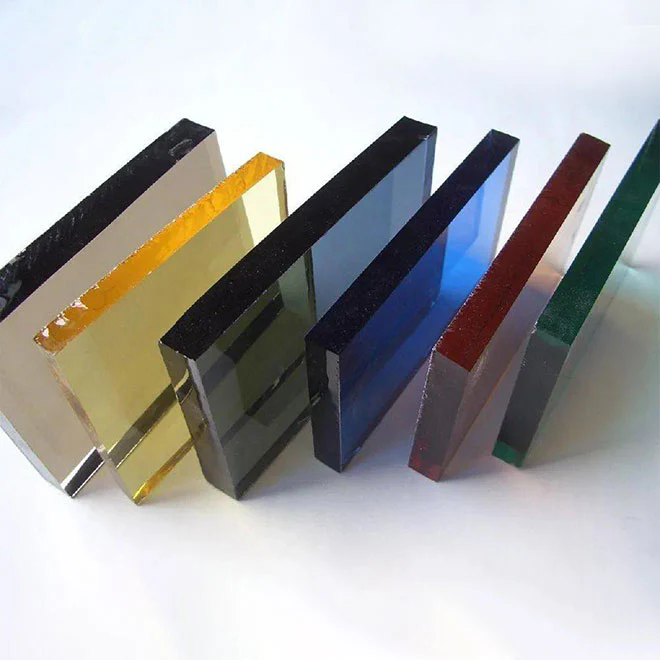Reflective Glass Panels: A Modern Touch to Architecture and Design
2024-08-22
In the world of contemporary architecture and interior design, reflective glass panels are making a significant impact. These panels, known for their sleek appearance and functional benefits, are increasingly becoming a popular choice in both commercial and residential settings. Whether used to enhance the aesthetic appeal of a building or to improve its energy efficiency, reflective glass panels offer a range of advantages that make them a valuable asset in modern design. In this blog, we will explore the features, benefits, and applications of reflective glass panels, providing you with a comprehensive understanding of their role in today’s architectural landscape.
What Are Reflective Glass Panels?
Reflective glass panels are a type of glass that has been coated with a reflective layer to control the amount of light and heat that passes through. This reflective coating is typically made from a thin layer of metal oxide or other reflective materials that are applied to the surface of the glass. The result is a panel that has a mirror-like finish on one side, reflecting light and heat while allowing a controlled amount of visibility through the glass.
Features of Reflective Glass Panels
1. Reflective Coating:
The key feature of reflective glass panels is their coating, which reflects a significant portion of solar radiation. This coating can be customized to achieve various levels of reflectivity, depending on the desired outcome.
2. Aesthetic Appeal:
Reflective glass panels have a modern and sleek appearance that enhances the visual appeal of buildings. The reflective surface can create striking architectural effects and contribute to a building’s overall design aesthetic.
3. Energy Efficiency:
The reflective coating helps reduce heat gain by reflecting solar radiation away from the building. This can lead to lower cooling costs and improved energy efficiency in buildings.
4. Glare Reduction:
By reflecting sunlight, these panels can reduce glare inside buildings, making indoor spaces more comfortable for occupants and improving visibility for those inside.
5. Privacy:
Reflective glass panels provide a level of privacy by preventing outsiders from seeing into the building while still allowing occupants to enjoy natural light and views.
6. Durability:
Reflective glass panels are designed to withstand environmental stresses, including weather conditions and UV radiation. The coating is typically durable and resistant to scratching.
7. Customization:
Reflective glass panels can be customized in terms of color, reflectivity, and thickness to meet specific design requirements and functional needs.
Benefits of Reflective Glass Panels
1. Energy Savings:
The reflective properties of the glass help to minimize the amount of heat entering the building, which can significantly reduce air conditioning costs and improve overall energy efficiency.
2. Enhanced Comfort:
By controlling heat gain and reducing glare, reflective glass panels contribute to a more comfortable indoor environment. This can lead to increased productivity and well-being for building occupants.
3. Improved Aesthetics:
Reflective glass panels offer a contemporary look that can transform the appearance of a building. The reflective surface adds a sophisticated touch and can complement various architectural styles.
4. Environmental Benefits:
By reducing the need for artificial cooling and lighting, reflective glass panels can help lower a building’s carbon footprint and contribute to sustainability efforts.
5. Increased Property Value:
Buildings with modern, energy-efficient features such as reflective glass panels may have higher market value. The aesthetic and functional benefits of these panels can make properties more attractive to potential buyers or tenants.
6. Reduced Fade:
Reflective glass helps protect interior furnishings and materials from UV radiation, which can cause fading and deterioration over time.
Applications of Reflective Glass Panels
1. Commercial Buildings:
Reflective glass panels are commonly used in the facades of office buildings, shopping centers, and hotels. They provide a modern look while enhancing energy efficiency and reducing glare for occupants and passersby.
2. Residential Buildings:
In residential settings, reflective glass panels can be used for windows, doors, and skylights. They offer privacy and comfort while adding a sleek, contemporary aesthetic to homes.
3. Public Spaces:
Reflective glass panels are used in the design of public spaces such as airports, transit stations, and museums. They contribute to the visual appeal of these high-traffic areas while improving energy performance.
4. High-Rise Buildings:
For skyscrapers and high-rise buildings, reflective glass panels help manage solar heat gain and glare, contributing to the building’s overall energy efficiency and occupant comfort.
5. Architectural Features:
Reflective glass panels can be used for decorative elements, such as curtain walls, partitions, and cladding. They enhance the architectural design and provide a distinctive look to various structures.
Tips for Using Reflective Glass Panels
1. Consider the Orientation:
The orientation of reflective glass panels can impact their performance. Take into account the direction of sunlight and how it will affect the building’s heat gain and glare reduction.
2. Choose the Right Reflectivity:
Reflective coatings come in various levels of reflectivity. Select a coating that meets your design goals and energy efficiency needs while balancing aesthetics and functionality.
3. Consult with Professionals:
Work with architects, designers, and glass specialists to ensure that reflective glass panels are properly integrated into your building’s design. Professional input can help optimize performance and achieve the desired results.
4. Maintenance:
While reflective glass panels are durable, regular cleaning and maintenance are essential to preserve their appearance and functionality. Follow manufacturer guidelines for cleaning and care.
5. Local Regulations:
Be aware of local building codes and regulations regarding the use of reflective glass. Some areas have specific requirements related to reflectivity and energy performance.
Conclusion
Reflective glass panels are a dynamic and stylish choice for modern architecture and design. Their combination of aesthetic appeal, energy efficiency, and functional benefits makes them a valuable addition to various building projects. By understanding their features and applications, you can make informed decisions and leverage the advantages of reflective glass panels to enhance the performance and appearance of your building. Embrace the possibilities of reflective glass and transform your architectural vision into reality with this innovative and versatile material.



